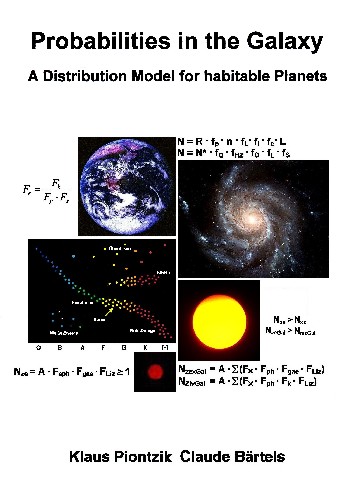In the following
chapters planets are classified into these six
categories:
| 2.7.1 Definition |
Planetary Categories |
| |
|
| h |
planets in
(h)abitable zones |
| |
|
| hsup |
(h)abitable (Sup)erearth |
| |
|
| hsub |
(h)abitable (Sub)earth |
| |
|
| g |
approximatly
earth-(g)reat planets
can be up to 4 times larger than the earth |
| |
|
| a |
(a)pproximatly
earth-like planets
Rotation time, orbital time deviate from the
earth
Mars belongs in this category |
| |
|
| e |
habitable,
(e)arth-like planets („Earth 2“) |
The indices in all equations and considerations of this
book are formatted, with the following meanings:
| 2.7.2
Definition |
Indices |
| |
|
| s |
(s)unlike |
| p |
(p)lanet |
| h |
(h)abitable zone |
| sub |
(Sub)earth |
| sup |
(Sup)erearth |
| g |
approximatly
earth-(g)reat |
| a |
(a)pproximatly
earth-like |
| e |
(e)arthlike |
| L |
(L)ife |
| i |
(i)ntelligent species |
| z |
civili(z)ation |
| u |
s(u)rvive civilization |
| m |
hu(m)an, humanoid |
| x |
not sunlike |
| RD |
(r)ed (D)warfs |
|
